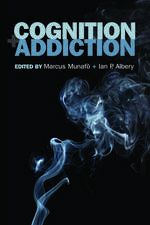Criminal Conduct and Substance Abuse Treatment for Adolescents: Pathways to Self-Discovery and Change: The Provider's Guide
Autor Harvey B. Milkman, Kenneth W. Wanbergen Limba Engleză Paperback – 27 aug 2012
Preț: 470.34 lei
Preț vechi: 553.34 lei
-15% Nou
Puncte Express: 706
Preț estimativ în valută:
90.01€ • 92.18$ • 74.87£
90.01€ • 92.18$ • 74.87£
Carte tipărită la comandă
Livrare economică 19 martie-02 aprilie
Preluare comenzi: 021 569.72.76
Specificații
ISBN-13: 9781452205809
ISBN-10: 1452205809
Pagini: 648
Dimensiuni: 216 x 279 x 18 mm
Greutate: 1.18 kg
Ediția:Second Edition
Editura: SAGE Publications
Colecția Sage Publications, Inc
Locul publicării:Thousand Oaks, United States
ISBN-10: 1452205809
Pagini: 648
Dimensiuni: 216 x 279 x 18 mm
Greutate: 1.18 kg
Ediția:Second Edition
Editura: SAGE Publications
Colecția Sage Publications, Inc
Locul publicării:Thousand Oaks, United States
Recenzii
"Milkman and Wanberg's program rests upon the best that science has to offer. Once this workbook stimulates change, it pays attention to the principles of relapse prevention that will help young people stay changed - and this is the litmus test for any treatment program that targets behavioral problems."
"Pathways to Self-Discovery and Change is the most comprehensive and thoughtful program we have seen to help at-risk youth gain freedom from crime and drugs and develop attitudes and skills to lead productive prosocial lives."
"This exceptional and widely needed program shows great promise as a developmentally appropriate treatment model for adolescents who manifest co-occurring disturbances with substance abuse and criminal activity. It is uniquely designed to interest and engage high-risk teenagers in a thoughtful array of cognitive-behavioral restructuring exercises that are geared to promote fulfilling and responsible life choices."
"Pathways to Self-Discovery and Change is the most comprehensive and thoughtful program we have seen to help at-risk youth gain freedom from crime and drugs and develop attitudes and skills to lead productive prosocial lives."
"This exceptional and widely needed program shows great promise as a developmentally appropriate treatment model for adolescents who manifest co-occurring disturbances with substance abuse and criminal activity. It is uniquely designed to interest and engage high-risk teenagers in a thoughtful array of cognitive-behavioral restructuring exercises that are geared to promote fulfilling and responsible life choices."
Cuprins
List of Figures
List of Tables
Presentation Guidelines List of Tables
List of Reflection Poems
Acknowledgments
Introduction: Promoting Adolescent Resiliency
Section I: Theoretical and Research Perspectives
1. Adolescent Development and Pathways to Problem Behavior
2. Causes, Correlates, and Consequences of Adolescent Substance Abuse
3. Co-occurring Substance Abuse and Mental Disorder
4. Substance Abuse and the Adolescent Brain
5. Juvenile Crime and Violence
6. Addressing Gang Culture in the Context of Treatment
7. Female-Focused Treatment in the Juvenile Justice System
8. Youth Culture and Diversity
Section II: Foundational Treatment Models: Evidence-Based Approaches
9. Treatment Systems, Modalities, and Models of Care
10. The Cognitive-Behavioral Model and Core Treatment Strategies for Adolescents
11. Community Reintegration: Reinforcing Change Through Continuing Care
Section III: Operational Guidelines
12. Guidelines for the Assessment of Juvenile Justice Clients
13. Methods and Procedures for Program Delivery
Section IV: The Treatment Curriculum: Presentation Guidelines
14. Guidelines for Session Delivery: Pathways to Self-Discovery and Change (PSDC) Program Orientation
Section V: Adjunct Provider's Guide for Treating Female Juvenile Justice Clients
15. Gender-Focused Session Enhancements
Appendices
References
Index
List of Tables
Presentation Guidelines List of Tables
List of Reflection Poems
Acknowledgments
Introduction: Promoting Adolescent Resiliency
Section I: Theoretical and Research Perspectives
1. Adolescent Development and Pathways to Problem Behavior
2. Causes, Correlates, and Consequences of Adolescent Substance Abuse
3. Co-occurring Substance Abuse and Mental Disorder
4. Substance Abuse and the Adolescent Brain
5. Juvenile Crime and Violence
6. Addressing Gang Culture in the Context of Treatment
7. Female-Focused Treatment in the Juvenile Justice System
8. Youth Culture and Diversity
Section II: Foundational Treatment Models: Evidence-Based Approaches
9. Treatment Systems, Modalities, and Models of Care
10. The Cognitive-Behavioral Model and Core Treatment Strategies for Adolescents
11. Community Reintegration: Reinforcing Change Through Continuing Care
Section III: Operational Guidelines
12. Guidelines for the Assessment of Juvenile Justice Clients
13. Methods and Procedures for Program Delivery
Section IV: The Treatment Curriculum: Presentation Guidelines
14. Guidelines for Session Delivery: Pathways to Self-Discovery and Change (PSDC) Program Orientation
Section V: Adjunct Provider's Guide for Treating Female Juvenile Justice Clients
15. Gender-Focused Session Enhancements
Appendices
References
Index
Notă biografică
Descriere
This new edition presents a comprehensive framework for monitoring the client's response to treatment, as well as suggestions for successful therapeutic interactions between clients, counsellors, peers, family members, and support personnel












